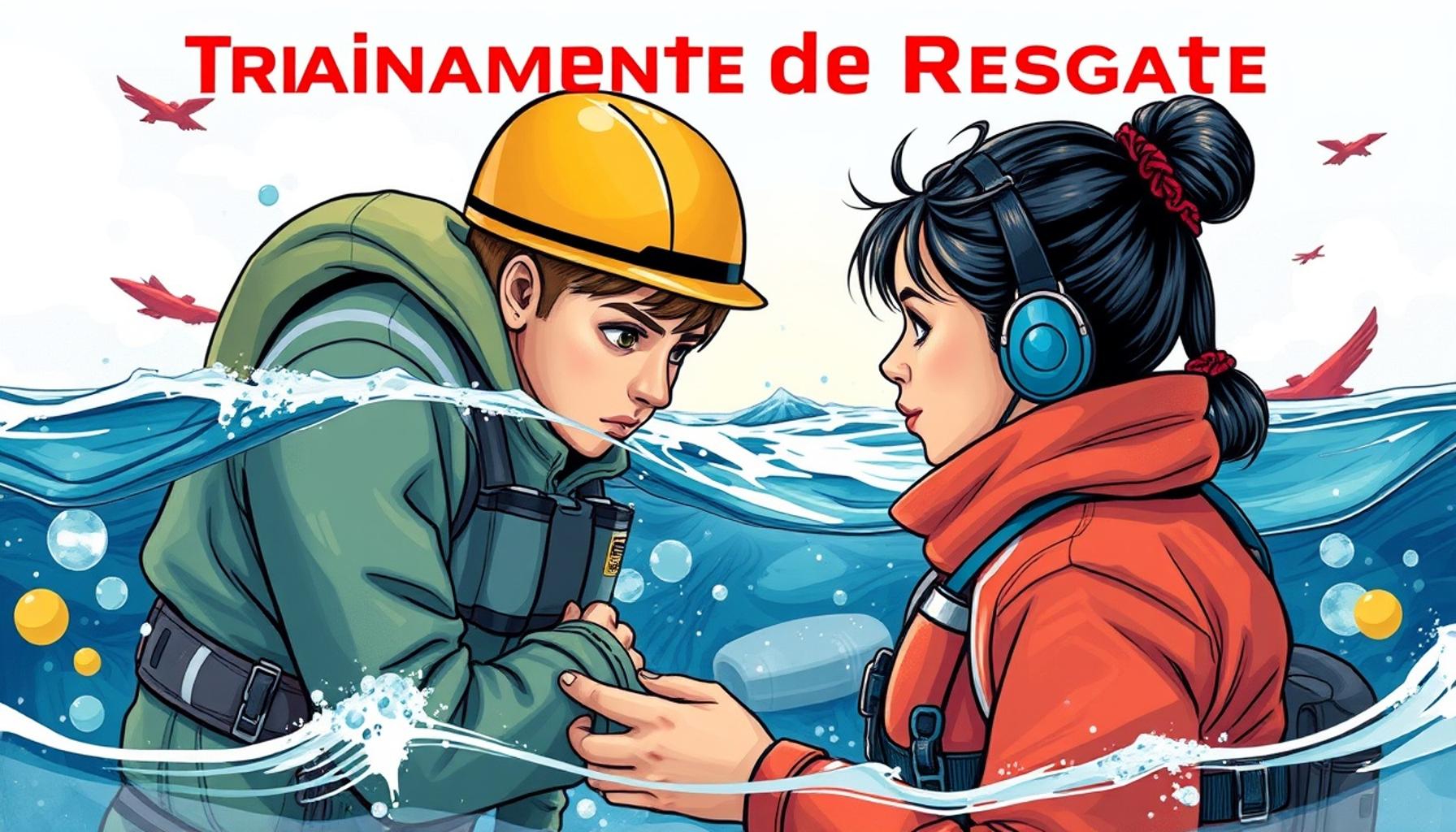Rescue Training: Preparing Dogs for Search and Rescue Missions

The Role of Dogs in Crisis Situations
In chaotic moments where human life hangs in the balance, trained canines assert themselves as indispensable partners in rescue operations. With their remarkable instinctual abilities and heightened senses, dogs have proven time and again to be pivotal in search and rescue missions, showcasing their potential to save lives in the most dire circumstances. This article explores not just their heroics, but the rigorous rescue training that molds these animals into life-saving companions.
The versatility of rescue dogs extends beyond mere companionship; they are equipped for an array of critical situations. Their roles can be categorized into several key areas:
- Natural disasters: Events such as earthquakes, floods, and landslides can trap individuals, leading to urgent search operations. For instance, in Nigeria, flooding in regions like Benue State has necessitated the involvement of search dogs, who are adept at sifting through debris to locate survivors.
- Emergency situations: In urban settings plagued by catastrophic incidents like building collapses or fires, trained dogs demonstrate exceptional speed and skill in locating victims. The recent collapse of a multi-story building in Lagos highlighted the need for swift canine intervention, where search dogs were deployed to navigate crevices with precision.
- Search operations: Wilderness areas often pose a challenge when individuals go missing. Dogs are particularly skilled in tracking scents over varying terrains, assisting search teams in locating lost hikers or individuals in remote forests.
Rescue Training Framework
In Nigeria, establishing robust search and rescue dog programs is crucial, especially as the country grapples with increasing natural disasters and emergencies. The training process encompasses several essential components:
- Obedience: A solid foundation of obedience training ensures that dogs understand commands from their handlers, facilitating effective communication during high-pressure situations. The bond formed through this training is paramount for achieving success in rescue missions.
- Tracking and scent identification: Dogs are trained to recognize and follow human scents over significant distances, even in challenging environments like dense jungles or urban rubble. This skill is critical during real-life searches for missing persons.
- Agility training: Canine athletes are groomed to navigate through debris, steep terrains, and unexpected obstacles effortlessly. This form of training builds their confidence and physical readiness for the challenges that come with rescue operations.
The Journey of Transformation
Embarking on the path of rescue training is not without its challenges. Handlers must invest considerable time and effort into cultivating the strengths of their canine partners. Moreover, the emotional resilience of both the dog and handler is tested, as they often face grim circumstances during real rescues.
The rewards, however, are profound. Successfully locating and saving an individual can be a life-altering experience for both the dog and the handler. As we uncover the methods and dedication behind this noble pursuit, we are reminded of the extraordinary potential that lies within ordinary dogs transformed into exceptional lifesavers.
In sum, the world of rescue dogs is captivating, filled with stories of heroism, training intricacies, and the heartfelt bond between dogs and their human partners. As Nigeria continues to face challenges from natural disasters and emergencies, enhancing search and rescue programs becomes ever more critical, ensuring these canine heroes are always prepared to rise to the occasion.
RECOMMENDED: Check out this similar article
The Path to Becoming a Hero
The journey into the world of rescue training is both meticulous and rewarding, requiring an unwavering commitment from both the canine and their handler. In Nigeria, where disasters can strike unexpectedly, the need for highly skilled search and rescue dogs is becoming increasingly apparent. Each step of the training process is designed to ensure that these dogs can operate effectively in high-stress conditions while maintaining a keen focus on their mission.
The first critical stage of rescue training begins with basic obedience. This is not merely about teaching the dog to sit or stay; it is about forging a deep-rooted bond between the dog and handler. A well-trained dog will respond promptly to commands, which can mean the difference between life and death in an emergency situation. In Nigeria, where distractions abound, achieving a high level of obedience requires consistent practice and patience.
Once a solid foundation is established, the next phase centers on tracking and scent identification. Dogs possess an extraordinary sense of smell, allowing them to pick up on scents that are imperceptible to humans. During training, dogs are taught to distinguish human scents from background odors prevalent in complex environments, including crowded urban areas or dense bush terrains found in various parts of Nigeria. For instance, during training exercises, dogs may be exposed to typical scenarios involving lost hikers in mountainous regions like the Jos Plateau, refining their tracking skills in the very environments they may encounter during a real operation.
Agility training further equips these dogs with the physical prowess needed to navigate through challenging terrains. In real-world situations, a rescue dog may need to leap over debris from a collapsed building or crawl through tight spaces in search of survivors. Training sessions often mimic these conditions, allowing the dogs to build the necessary confidence and physical conditioning. Exercises can include climbing over obstacles, balancing on narrow surfaces, and running through tunnels, creating a comprehensive skill set that prepares them for the unpredictability of disaster scenarios.
Examining the Emotional Connection
As much as the physical readiness of the dog is essential, the emotional stability of both the dog and handler is equally vital. Handlers must be attuned to their dog’s body language, understanding when they are stressed or overwhelmed. This connection can be fostered through consistent training routines and positive reinforcement, enabling handlers to better support their canine partners during intense missions.
Moreover, because rescue missions often unfold in the wake of tragic events, handlers must cultivate emotional resilience. They do this by preparing for various outcomes, including the potential for finding deceased individuals. Through enhanced emotional support systems and training, both handler and dog can emerge strengthened from their experiences, continuing to serve as reliable assets in future rescue operations.
Ultimately, this rigorous training process transforms ordinary dogs into extraordinary heroes, enabling them to participate in life-saving missions across Nigeria. By investing in and supporting these programs, communities can ensure that they are ready to face emergencies with the essential skills needed to minimize loss and maximize lives saved.
| Advantages | Key Features |
|---|---|
| Enhanced Team Collaboration | Dogs trained for search and rescue work seamlessly with human handlers, improving efficiency during critical operations. |
| Community Preparedness | These training programs foster readiness within communities, ensuring that both humans and dogs can respond promptly to emergencies. |
| Life-Saving Skills | Trained dogs acquire critical skills enabling them to locate missing persons, potentially saving lives in various scenarios. |
| Strong Bonding | Training enhances the bond between the dog and handler, resulting in improved trust and communication during missions. |
In rescue operations, the connection between handler and the search dog plays an essential role in the effectiveness of the mission. The unique bond established during training ensures that both parties can work together efficiently, enhancing performance in high-pressure situations. Additionally, implementing rigorous training protocols enables dogs to develop life-saving skills that are invaluable in real-world scenarios, whether it’s finding lost hikers in the wilderness or assisting in disaster relief efforts. As communities become more vigilant and prepared, they can respond to emergencies more effectively, thus highlighting the importance of community preparedness through comprehensive training programs. Ultimately, every dog trained in search and rescue missions contributes to a more responsive and resilient society, where the abilities of our canine partners are recognized as crucial elements in times of crisis. Knowledge and training in search and rescue can lead to groundbreaking advancements in human-dog collaboration, drawing significant attention to this essential field.
CHECK OUT: Click here to explore more
Pushing the Limits: Advanced Techniques and Technology
As the field of canine rescue training evolves, trainers increasingly incorporate advanced techniques and technology to enhance the operational capabilities of rescue dogs. These methods not only improve the efficiency of search and rescue missions but also ensure that dogs are prepared for the complexity of the tasks they face, especially in a rapidly changing environment like Nigeria.
One innovative approach is the use of simulation training, where realistic scenarios are created to mimic the chaos of disaster situations. For example, trainers may set up controlled environments that simulate earthquakes or floods, allowing dogs to practice their skills in environments that closely resemble the scenarios they will encounter. This aids in developing the dog’s ability to remain calm under pressure while honing their instincts to locate and assist survivors. Trainers in Nigeria are increasingly leveraging local resources, like constructing temporary rubble piles or using fallen trees to create a safe but realistic training ground.
In addition to physical training, the integration of modern technology has transformed how rescue missions are conducted. Geolocation software and drones equipped with thermal imaging can assist handlers in planning searches more effectively. These tools help pinpoint areas where victims are likely trapped, enhancing the focus of the canine’s search efforts. The synergy between dogs and technology can significantly shorten response times, which is critical during natural disasters where every second counts.
Collaboration with Local Communities
Another crucial aspect of rescue training is the collaboration with local community organizations, which plays a vital role in preparedness. Community members are increasingly engaged in training exercises, learning how to respond in crisis situations while understanding the capabilities of rescue dogs. In Nigeria, where community ties are strong, grassroots initiatives help raise awareness about the importance of rescue operations. Training drills often involve local volunteers acting as victims, enabling both dogs and handlers to sharpen their response strategies in a supportive environment.
- Community Awareness Programs: Educational workshops help communities recognize the signs of emergencies and prepare them for efficient cooperation during rescue missions.
- Volunteer Engagement: Local volunteers frequently participate in simulations, promoting a sense of shared responsibility and preparedness within the community.
Furthermore, the establishment of partnerships with first responders enhances the effectiveness of rescue missions. Fire departments, disaster response teams, and local law enforcement collaborate closely with K9 units to create a unified response effort. This cooperation allows for better coordination during emergencies, allowing rescue dogs and their handlers to access vital information on ongoing situations, such as blocked routes or dangerous conditions, which can influence the training and operational strategy.
As the demand for effective search and rescue capabilities grows, it becomes increasingly evident that continuous training and adaptation are essential. By integrating advanced training techniques, community involvement, and collaborative approaches, Nigeria is making strides towards developing a robust system for search and rescue missions that not only saves lives but also unites communities in the face of adversity.
ADDITIONAL INSIGHTS: Expand your understanding here
Conclusion: The Future of Rescue Training
In conclusion, rescue training for dogs represents a critical investment in the safety and effectiveness of search and rescue missions, particularly in regions like Nigeria, where natural disasters and emergencies pose significant threats. The integration of advanced training techniques and modern technology not only enhances the capabilities of these canines but also ensures that they can adapt to various challenges in real-time situations. The use of simulation training and state-of-the-art tools, such as drones and geolocation software, allows for a comprehensive preparation that is vital for success.
Moreover, the emphasis on community collaboration further strengthens the approach to rescue operations. Engaging local populations not only fosters a sense of shared responsibility but builds trust between community members and rescue teams. By creating awareness through programs and involving volunteers in training, the foundation for a coordinated emergency response is solidified, amplifying the impact of rescue efforts during crises.
The evolution of search and rescue missions in Nigeria highlights the importance of continuous adaptation and innovation. As demand grows for effective and rapid response capabilities, it is imperative to recognize the invaluable role that well-trained dogs play in saving lives. The partnership between technology, trainers, first responders, and local communities not only enhances operational strategies but also cultivates resilience within society. By fostering this collaborative spirit, Nigeria is poised to face future challenges with a robust and unified response system, ready to make a difference in urgent situations.


